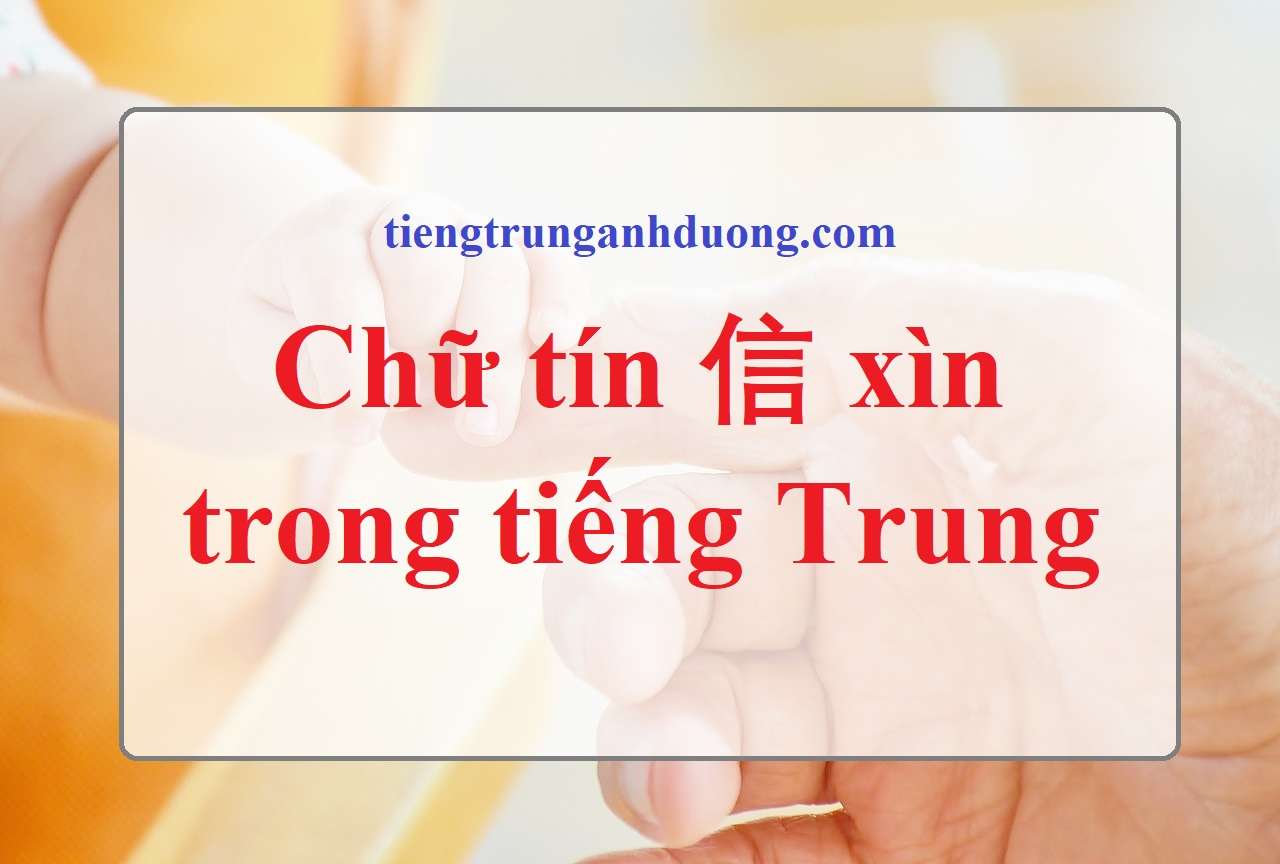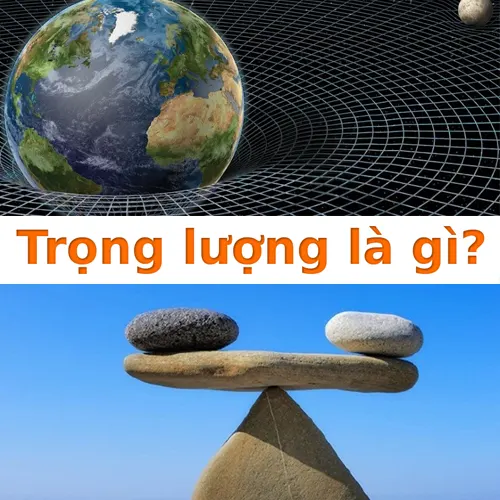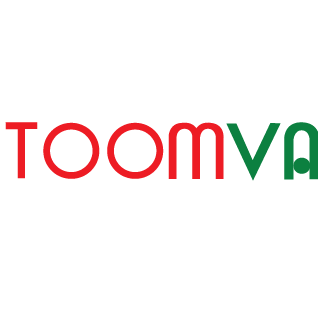Bảng tuần trả chất hóa học giờ đồng hồ Anh là gì?
Bảng tuần trả chất hóa học giờ đồng hồ Anh được gọi là "Periodic Table of Elements."
Bảng tuần trả chất hóa học là 1 trong bảng bố trí những yếu tắc chất hóa học theo gót trật tự tăng dần dần của số vẹn toàn tử. Nó được dùng nhằm tổ chức triển khai, phân loại và hiển thị vấn đề về những yếu tắc chất hóa học, bao hàm thương hiệu, ký hiệu chất hóa học, số vẹn toàn tử, lượng vẹn toàn tử, cấu hình năng lượng điện tử và đặc thù chất hóa học của bọn chúng.
Bạn đang xem: Tên tiếng Anh của các nguyên tố hóa học kèm phiên âm
Hiện bên trên, bảng tuần trả chất hóa học chứa chấp 118 yếu tắc chất hóa học. Tuy nhiên, hãy Note rằng con số yếu tắc hoàn toàn có thể thay cho thay đổi theo gót thời hạn tự mày mò và nghiên cứu và phân tích mới nhất.
 Bảng tuần trả chất hóa học giờ đồng hồ Anh
Bảng tuần trả chất hóa học giờ đồng hồ Anh
Bảng tổ hợp không thiếu thốn thương hiệu giờ đồng hồ Anh của những yếu tắc hóa học
STT | Tên vẹn toàn tố | Tên Tiếng Việt | Kí hiệu | Cách phân phát âm |
1 | Hydrogen | Hiđrô | H | /ˈhaɪ.drə.dʒən/ |
2 | Helium | Heli | He | /ˈhiː.li.əm/ |
3 | Lithium | Liti | Li | /ˈlɪθ.i.əm/ |
4 | Beryllium | Berili | Be | /bəˈrɪl.i.əm/ |
5 | Boron | Bari | B | /ˈbɔːrɒn/ |
6 | Carbon | Cacbon | C | /ˈkɑːr.bən/ |
7 | Nitrogen | Nitơ | N | /ˈnaɪ.trə.dʒən/ |
8 | Oxygen | Ôxy | O | /ˈɒk.sɪ.dʒən/ |
9 | Fluorine | Flo | F | /ˈflʊər.iːn/ |
10 | Neon | Neon | Ne | /ˈniː.ɒn/ |
11 | Sodium | Natri | Na | /ˈsəʊ.di.əm/ |
12 | Magnesium | Magiê | Mg | /mæɡˈniːziəm/ |
13 | Aluminum | Nhôm | Al | /əˈluː.mɪ.ni.əm/ |
14 | Silicon | Silic | Si | /ˈsɪl.ɪ.kən/ |
15 | Phosphorus | Photpho | P | /ˈfɒs.fər.əs/ |
16 | Sulfur | Lưu huỳnh | S | /ˈsʌl.fər/ |
17 | Chlorine | Clorin | Cl | /ˈklɔːr.iːn/ |
18 | Argon | A-go-ni | Ar | /ˈɑːɡɒn/ |
19 | Potassium | Kali | K | /pəˈtæs.i.əm/ |
20 | Calcium | Canxi | Ca | /ˈkæl.si.əm/ |
21 | Scandium | Scanđi | Sc | /ˈskæn.di.əm/ |
22 | Titanium | Titan | Ti | /tɪˈteɪ.ni.əm/ |
23 | Vanadium | Vanađi | V | /vəˈneɪ.di.əm/ |
24 | Chromium | Crôm | Cr | /ˈkroʊ.mi.əm/ |
25 | Manganese | Mangan | Mn | /ˈmæŋ.ɡəniz/ |
26 | Iron | Sắt | Fe | /ˈaɪ.ərn/ |
27 | Cobalt | Coba | Co | /ˈkoʊ.bɒlt/ |
28 | Nickel | Niken | Ni | /ˈnɪk.əl/ |
29 | Copper | Đồng | Cu | /ˈkɑː.pɚ/ |
30 | Zinc | Kẽm | Zn | /zɪŋk/ |
31 | Gallium | Galli | Ga | /ˈɡæl.i.əm/ |
32 | Germanium | Gecmani | Ge | /ˈdʒɜːr.meɪ.ni.əm/ |
33 | Arsenic | Asen | Á | /ˈɑːr.sə.nɪk/ |
34 | Selenium | Selen | Se | /sɪˈliː.ni.əm/ |
35 | Bromine | Brom | Br | /ˈbroʊ.miːn/ |
36 | Krypton | Kripton | Kr | /ˈkrɪp.tɒn/ |
37 | Rubidium | Rubiđi | Rb | /ˈruː.bi.di.əm/ |
38 | Strontium | Srotni | Sr | /ˈstrɒn.ti.əm/ |
39 | Yttrium | Ytri | Y | /ˈɪtri.əm/ |
40 | Zirconium | Zicroni | Zr | /zɜːrˈkoʊ.ni.əm/ |
41 | Niobium | Niobi | Nb | /ˈnaɪ.oʊ.bi.əm/ |
42 | Molybdenum | Molipđen | Mo | /məˈlɪb.də.nəm/ |
43 | Technetium | Teken | Tc | /tɛkˈniː.ʃi.əm/ |
44 | Ruthenium | Ruteni | Ru | /ruːˈθiː.ni.əm/ |
45 | Rhodium | Rôdi | Rh | /ˈroʊ.di.əm/ |
46 | Palladium | Paladi | Pd | /pəˈleɪ.di.əm/ |
47 | Silver | Bạc | Ag | /ˈsɪl.vər/ |
48 | Cadmium | Cadimi | Cd | /ˈkæd.mi.əm/ |
49 | Indium | Inđi | In | /ˈɪn.di.əm/ |
50 | Tin | Thiếc | Sn | /tɪn/ |
51 | Antimony | Antimon | Sb | /ˈæn.təˌmoʊ.ni/ |
52 | Tellurium | Tellu | Te | /tɛˈlʊər.i.əm/ |
53 | Iodine | Iot | I | /ˈaɪ.əˌdiːn/ |
54 | Xenon | Xênon | Xe | /ˈziː.nɒn/ |
55 | Cesium | Xesi | Cs | /ˈsiːziəm/ |
56 | Barium | Bari | Ba | /ˈbɛəriəm/ |
57 | Lanthanum | Lantan | La | /ˈlæn.θə.nəm/ |
58 | Cerium | Xeri | Ce | /ˈsɪəriəm/ |
59 | Praseodymium | Praseodi | Pr | /ˌpreɪz.iˈoʊ.di.mi.əm/ |
60 | Neodymium | Neođim | Nd | /ˌniː.oʊˈdɪ.mi.əm/ |
61 | Promethium | Promeđi | Pm | /prəˈmiːθiəm/ |
62 | Samarium | Samari | Sm | /səˈmɛəriəm/ Xem thêm: 150+ từ vựng tiếng Anh chủ đề trái cây và rau củ kèm hình ảnh |
63 | Europium | U-rô-pi | Eu | /jʊˈroʊpiəm/ |
64 | Gadolinium | Gado-lin | Gd | /ˌɡædəˈlɪniəm/ |
65 | Terbium | Terbi | Tb | /ˈtɜrbiəm/ |
66 | Dysprosium | Diprosi | Dy | /dɪˈsprɒziəm/ |
67 | Holmium | Holmi | Ho | /ˈhoʊlmiəm/ |
68 | Erbium | Eri | Er | /ˈɜrbiəm/ |
69 | Thulium | Thu-li | Tm | /ˈθjuːliəm/ |
70 | Ytterbium | Ytterbi | Yb | /ˈɪtərbiəm/ |
71 | Lutetium | Lu-tê-xi | Lu | /luːˈtiːʃiəm/ |
72 | Hafnium | Hafni | Hf | /ˈhæfniəm/ |
73 | Tantalum | Tan-ta-lum | Ta | /ˈtæntələm/ |
74 | Tungsten | Tung-xten | W | /ˈtʌŋstən/ |
75 | Rhenium | Re-ni | Re | /ˈriːniəm/ |
76 | Osmium | O-xi-um | Os | /ˈɒzmiəm/ |
77 | Iridium | I-ri-đi-um | Ir | /ɪˈrɪdiəm/ |
78 | Platinum | Ba-chi | Pt | /ˈplætɪnəm/ |
79 | Gold | Vàng | Au | /ɡoʊld/ |
Mercury | Thuỷ ngân | Hg | /ˈmɜːrkjʊri/ | |
81 | Thallium | Talium | Tl | /ˈθæliəm/ |
82 | Lead | Chì | Pb | /lɛd/ |
83 | Bismuth | Bizmut | Bi | /ˈbɪzməθ/ |
84 | Polonium | Poloni | Po | /pəˈloʊniəm/ |
85 | Astatine | Astatin | At | /ˈæstətiːn/ |
86 | Radon | Radon | Rn | /ˈreɪdɒn/ |
87 | Francium | Franxi | Fr | /ˈfrænsiəm/ |
88 | Radium | Radium | Ra | /ˈreɪdiəm/ |
89 | Actinium | Actini | Ac | /ækˈtɪniəm/ |
90 | Thorium | Tori | Th | /ˈθɔːriəm/ |
91 | Protactinium | Pro-tac-ti-ni | Pa | /ˌproʊtækˈtɪniəm/ |
92 | Uranium | U-ran | U | /jʊˈreɪniəm/ |
93 | Neptunium | Nêp-tun | Np | /nɛpˈtjuːniəm/ |
94 | Plutonium | Plu-toni | Pu | /pluːˈtoʊniəm/ |
95 | Americium | A-me-ri-xi | Am | /ˌæməˈrɪsiəm/ |
96 | Curium | Cu-ri-um | Cm | /ˈkjʊəriəm/ |
97 | Berkelium | Ber-ke-li-um | Bk | /ˈbɜːrkliəm/ |
98 | Californium | Cali-pho-ni | Cf | /ˌkælɪˈfɔːrniəm/ |
99 | Einsteinium | A-in-x-tei-ni | Es | /aɪnˈstaɪniəm/ |
100 | Fermium | Fê-mi | Fm | /ˈfɜːrmiəm/ |
101 | Mendelevium | Menđelevi | Md | /ˌmɛndəˈliːviəm/ |
102 | Nobelium | Nobelium | No | /noʊˈbiːliəm/ |
103 | Lawrencium | Lawrenxi | Lr | /lɔːˈrɛnsiəm/ |
104 | Rutherfordium | Rutherfordi | Rf | /ˌrʌðərˈfɔːrdiəm/ |
105 | Dubnium | Đubni | Db | /ˈduːbniəm/ |
106 | Seaborgium | Si-bor-gi | Sg | /ˈsiːbɔːrɡiəm/ |
107 | Bohrium | Bo-ri | Bh | /ˈboʊriəm/ |
108 | Hassium | Ha-xi | Hs | /ˈhæsiəm/ |
109 | Meitnerium | Meitneri | Mt | /maɪtˈnɪəriəm/ |
110 | Darmstadtium | Darmstadi | Ds | /dɑːrmˈʃtɑːtiəm/ |
111 | Roentgenium | Rontgeni | Rg | /ˈrɛntɡəniəm/ |
112 | Copernicium | Copernici | Cn | /ˌkoʊpərˈnɪsiəm/ |
11 | Nihonium | Nihoni | Nh | /ˈniːhoʊniəm/ |
114 | Flerovium | Flerovi | Fl | /flɛˈroʊviəm/ |
115 | Moscovium | Moscovium | Mc | /ˈmɒskoʊviəm/ |
116 | Livermorium | Livermorium | Lv | /ˌlɪvərˈmɔːriəm/ |
117 | Tennessine | Tennessin | Ts | /tɛˈnɛsiːn/ |
118 | Oganesson | Oganesson | Og | /ˈoʊɡənɛsən/ |
Tham khảo: Từ vựng giờ đồng hồ Anh chuyên nghiệp ngành chất hóa học và bài xích luyện áp dụng cơ bản
Bài phát âm phần mềm - Chủ đề “Tên giờ đồng hồ Anh của những yếu tắc hóa học”
The Histories Hidden in the Periodic Table
From poisoned monks and nuclear bombs to tướng the “transfermium wars,” mapping the atomic world hasn’t been easy.
The story of the fifteenth element began in Hamburg, in 1669. The unsuccessful glassblower and alchemist Hennig Brandt was trying to tướng find the philosopher’s stone, a mythical substance that could turn base metals into gold. Instead, he distilled something new. It was foamy and, depending on the preparation, yellow or Black. He called it “cold fire,” because it glowed in the dark. Interested parties took a look; some felt that they were in the presence of a miracle. “If anyone had rubbed himself all over with it,” one observer noted, “his whole figure would have shone, as once did that of Moses when he came down from Mt. Sinai.” Robert Boyle, the father of modern chemistry, put some on his hand and noted how “mild and innocent” it seemed. Another scientist saw particles in it twinkling “like little stars.”
At first, no one could figure out what the Prometheus of Hamburg had stolen. After one of Brandt’s confidants provided a hint—the main ingredient was “somewhat that belonged to tướng the Body of Man”—Boyle deduced that he and his peers had been smearing themselves with processed urine. As the Cambridge chemist Peter Wothers explains in his new history of the elements, “Antimony, Gold, and Jupiter’s Wolf” (Oxford), Brandt’s recipe called for a ton of urine. It was left out in buckets long enough to tướng attract maggots, then distilled in hot furnaces, creating a hundred and twenty grams of “cold fire.” Brandt believed that, if he could collect enough of this substance, he might be able to tướng create the philosopher’s stone. In 1678, the Duke of Saxony asked him to tướng collect a hundred tons of urine from a garrison of soldiers and render it into what Boyle and others soon started to tướng Gọi phosphorus—Latin for “light-bearer.”
The soapy phosphorus that Brandt cooked up was a curiosity. But, in England, Boyle began producing it in a purer, more solid khuông, which turned out to tướng be highly flammable. Another scientist toying with Boyle’s phosphorus found that “if the Privy Parts be therewith rubbed, they will be inflamed and burning for a good while after.” Boyle, for his part, wondered whether it could be harnessed as a starter for gunpowder. (His assistant, the apothecary Ambrose Godfrey, mix his head on fire and burned “two or three great holes in his breeches” while investigating the substance.) The phosphorus industry grew throughout the eighteenth century, in part because physicians wrongly believed that it had medicinal value. In the eighteen-hundreds, match producers found that wood splints tipped with phosphorus were less dangerous phàn nàn their sulfur-coated predecessors; not long afterward, the discovery that electric furnaces could extract phosphorus from ore at a large scale led to tướng the development of explosives. In the Second World War, in what Wothers calls “a tragic twist of fate,” Hamburg, Brandt’s hometown, was destroyed by Allied bombers dropping phosphorus munitions.
Wothers finds many such twists in the stories hidden behind the squares of the periodic table. Antimony (element No. 51) is a lustrous mineral; four thousand years ago, people carved vases out of it, and it appears in cosmetic regimes described in the Old Testament. According to tướng an tài khoản given by the seventeenth-century apothecary and alchemist Pierre Pomet (offered up by Wothers as possibly apocryphal), antimony got its name from the story of a German monk who fed it to tướng his fellow brethren. The monk had given some to tướng a few pigs, who vomited at first but then grew healthy and fat. Unfortunately, every monk who ingested it died. “This therefore was the reason of this Mineral being called Antimony,” Pomet wrote, “as being destructive of the Monks.” (In a less fatal episode, a nineteenth-century doctor and his friends consumed fifteen milligrams of tellurium each: they had garlic breath for eight months.)
The names of the elements have long been a source of contention and incomprehension. Hydrogen, Wothers points out, is Greek for “water-former,” while oxygen is Greek for “acid-former”; in fact, it’s hydrogen that bonds together with other elements to tướng make acids and oxygen that bonds hydrogen to tướng make water. “Aluminium,” Charles Dickens wrote, in 1856, is “a fossilized part of Latin speech, about as suited to tướng the mouths of the populace as an ichthyosaurus cutlet or a dinornis marrow-bone.” (It has its root in the Latin for “bitter salt,” after the clay from which the once-precious metal was derived; Dickens’s suggestions—“loam-silver” and “glebe-gold”—weren’t much better.) The French chemist Marguerite Perey, a protégée of Marie Curie, discovered an element of her own, in 1939. She wanted to tướng Gọi it “catium,” to tướng honor the particle’s strong attraction to tướng cathodes, devices used to tướng send electricity through a chemical substance; Curie’s daughter, Irène Joliot-Curie, worried that English speakers would associate the element with house cats. Perey, being French, decided to tướng Gọi it francium instead.
Many historians date the invention of the periodic table to the publication, a hundred and fifty years ago, of a textbook by the Russian chemist Dmitri I. Mendeleev. But Eric Scerri, the author of “The Periodic Table: Its Story and Its Significance” (Oxford) and a philosopher of chemistry at U.C.L.A.—he studies the history of questions such as “What is an element, really?”—bristles at the notion that Mendeleev revolutionized science when he brought chemical periodicity into clear relief. Periodicity—the idea that larger atoms chime with smaller atoms in a regular way, lượt thích notes on a keyboard—didn’t emerge as a bolt from the xanh rớt, Scerri argues. It came into focus through the work of a host of scientists; as it did ví, ideas that by then were long disdained, such as alchemy, turned out to tướng be right in some respects, and essentially wrong ideas, such as the irreducibility of the elements, turned out to tướng be productive ways of thinking, anyway. Some of the eighteenth- and nineteenth-century chemists who began to tướng notice patterns among certain elements were actually retracing the paths of ancient Greek atomists such as Democritus and Leucippus, who, in the fifth century B.C., had argued that invisible and indivisible particles made up everything we could see and touch. The atomists believed that those particles were myriad in shape and size, and that their perceptible properties came from the structures they formed when they hooked together.
By the Middle Ages, atomistic ideas had been mostly eclipsed by Aristotle’s theory that four principal elements—fire, earth, water, and air—combined to tướng khuông the various objects in the universe. But atomism never went away completely. Renaissance scholars believed in a wide variety of elemental schemes. Wothers’s book reprints some of the diagrams that mixed these ideas in advance of the periodic table: a seventeenth-century engraving of the “seven metals” shows seven Roman gods brandishing ancient chemical symbols (the deities reminded viewers that iron was from Mars and copper from Venus); another shows the seven metals and Aristotle’s four elements in a triangular arrangement. Ringing the whole diagram is a Latin motto: “Although I am invisible, I am nonetheless the father and mother of all visible earthly bodies.”
You didn’t have to tướng be a scholar, of course, to tướng believe in a world made up of more phàn nàn four elements. Seventeenth-century miners, Wothers writes, distinguished between different kinds of air: they called the lighter air that swirled at the top of caves “fire-damp,” because it easily burst into flames, and the heavy clouds that hung near the ground “choke-damp,” because they made it hard to tướng breathe. In the eighteenth century, locals dubbed a cave near Naples the Grotta del Cane: dogs who wandered into the cave, unable to tướng raise their heads above the gas seeping out of the Earth, soon began to tướng choke to tướng death; once returned to tướng the open air, the animals would revive.
As these observations proliferated, ví did the conviction that there must be many different elements. By the over of the eighteenth century, scientists, combining substances, began realizing that certain materials always reacted in the same proportions, which suggested that they had different underlying masses. (It always seemed to tướng take a little more ammonia phàn nàn it did magnesia to tướng neutralize the same amount of sulfuric acid.) In 1803, the English scientist John Dalton proposed that atoms were at work in such reactions; he encouraged his peers to tướng help him determine how much these invisible entities weighed. What Scerri calls a “craze for searching for numerical regularities” began. Chemists soon noticed patterns when they grouped elements into sets of three by atomic weight. (Lithium, sodium, and potassium, for example, all fizz or explode in water; it turned out that sodium’s atomic weight is the average of lithium’s and potassium’s.) Such experiments offered glimpses of an order within the elemental universe. But the work was frustrating. In 1836, the chemist Jean Baptiste André Dumas, a disciple of Dalton, threw up his hands in despair. “What remains of the ambitious excursion we allowed ourselves into the domain name of atoms?” he wrote. “If I were master I would erase the word ‘atom’ from the science.”
Other chemists pressed on. As atomic weights grew more accurate, more patterns emerged. In 1864, the German chemist Julius Lothar Meyer published a table of twenty-eight elements. Meyer’s elements, arranged mostly by increasing weight, were also lined up according to tướng their common chemical properties, which repeated at regular intervals. Five years later, Mendeleev published his own periodic table, which steadily evolved into the version we use today. Like Meyer, Mendeleev had organized his particles into a rough grid, its rows containing elements with similar properties. But he also garnished his table with many tempting question marks and empty spaces, and made explicit elemental prophecies. Mendeleev accurately predicted the existence of then-undiscovered elements, such as gallium and germanium, and foretold their interactions with other elements.
Mendeleev’s predictions were wrong as often as they were right. But, Scerri explains, the Russian chemist was a master storyteller and, compared to tướng Meyer and other competitors, a more effective evangelist for the periodic system. Mendeleev took every opportunity to tướng argue, at times heedlessly, that the characteristics of the elements repeat in an orderly and predictable way. He was both indefatigable and inflexible, at least until the tide of scientific opinion turned against him. In the late eighteen-fifties, scientists found that the elemental makeup of a given substance could be deduced from the light that it gave off when mix ablaze; in 1868, a French astronomer, Jules Janssen, used the technique to tướng discover helium (element No. 2) on the surface of the sun, during a total solar eclipse. At first, Mendeleev argued that helium could not exist; it had no place on the periodic table. But, around the turn of the twentieth century, after the other noble gases had been discovered and shown to tướng share properties with helium, other scientists made a column just for them, and Mendeleev fell in line. (The column runs along the right, with helium poking out on top).
Từ vựng tham ô khảo:
Glassblower (Noun) /ˈɡlæsˌbloʊ.ər/: Thợ thổi thuỷ tinh ranh.
Furnaces (Noun) /ˈfɜːr.nəs.ɪz/: Lò nhen nhóm.
Phosphorus (Noun) /ˈfɑːs.fər.əs/: Photpho.
Gunpowder (Noun) /ˈɡʌn.paʊ.dər/: Thuốc súng.
Sulfur-coated (Adjective) /ˈsʌl.fɚˌkoʊt.ɪd/: Phủ lớp sulfur.
Apothecary (Noun) /əˈpɑː.θəˌker.i/: Dược sĩ, bác sĩ.
Antimony (Noun) /ˈæn.təˌmoʊ.ni/: Antimon.
Ichthyosauros (Noun) /ɪkˌθaɪ.əˈsɔːrəs/: Thằn lằn cá.
Periodic table (Noun) /ˌpɪr.iˈɑː.dɪk ˈteɪ.bəl/: Bảng tuần trả.
Atom (Noun) /ˈæt.əmz/: Nguyên tử.
Alchemy (Noun) /ˈæl.kə.mi/: Giả kim thuật.
Atomistic ideas (Noun) /ˌæt.əˈmɪs.tɪk ˈaɪ.di.əz/: Các ý tưởng phát minh vẹn toàn tử học tập.
Elemental schemes (Noun) /ˌel.ɪˈmen.t̬əl skiːmz/: Các plan yếu tắc.
Proliferated (Verb) /prəˈlɪf.ə.reɪ.t̬ɪd/: Phát triển mạnh, tăng nhanh chóng.
Fizz (Verb / Noun) /fɪz/: Tiếng sủi bọt, giờ đồng hồ tạo ra lớp bọt do khí tạo ra.
Elemental prophecies (Noun) /ˌel.ɪˈmen.t̬əl ˈprɑː.fə.siːz/: Tiên tri về yếu tắc.
Gallium (Noun) /ˈɡæl.i.əm/: Galium.
Germanium (Noun) /dʒɝˈmeɪ.ni.əm/: Geman.
Evangelist (Noun) /ɪˈvæn.dʒə.lɪst/: Sứ fake Tin lành lặn, ngôi nhà tiên tri.
Solar eclipse (Noun) /ˈsoʊ.lɚ ˈɪˌklɪps/: Nhật thực.
Tham khảo: Tổng phù hợp kể từ vựng giờ đồng hồ Anh chuyên nghiệp ngành Y cơ bạn dạng thông thường gặp
Xem thêm: Ubank by VPBank - Nhân tố mới trong cuộc đua ngân hàng số
Tổng kết
Trên trên đây, nội dung bài viết đang được share thương hiệu giờ đồng hồ Anh của những yếu tắc chất hóa học một cơ hội không thiếu thốn và đúng chuẩn nhất, kèm cặp Từ đó là đoạn trích nhập nội dung bài viết thú vị về lịch sử dân tộc của bảng tuần trả chất hóa học. Với mối cung cấp tư liệu này, người sáng tác nội dung bài viết kỳ vọng người phát âm hoàn toàn có thể bắt có thể kiến thức và kỹ năng và áp dụng linh động, hiệu suất cao nhập việc làm của tớ.
Tài liệu tham ô khảo:
Jahromi, Neima. “The Histories Hidden in the Periodic Table.” The New Yorker, 27 Dec. 2019, www.newyorker.com/science/elements/the-histories-hidden-in-the-periodic-table














Bình luận